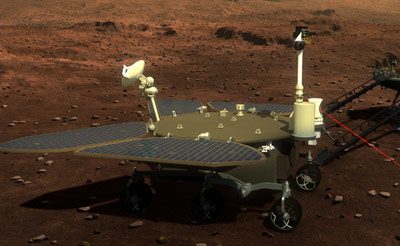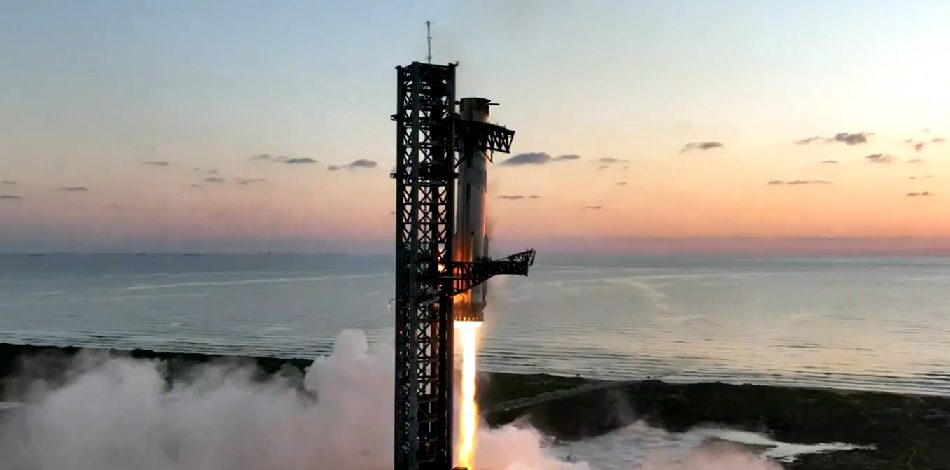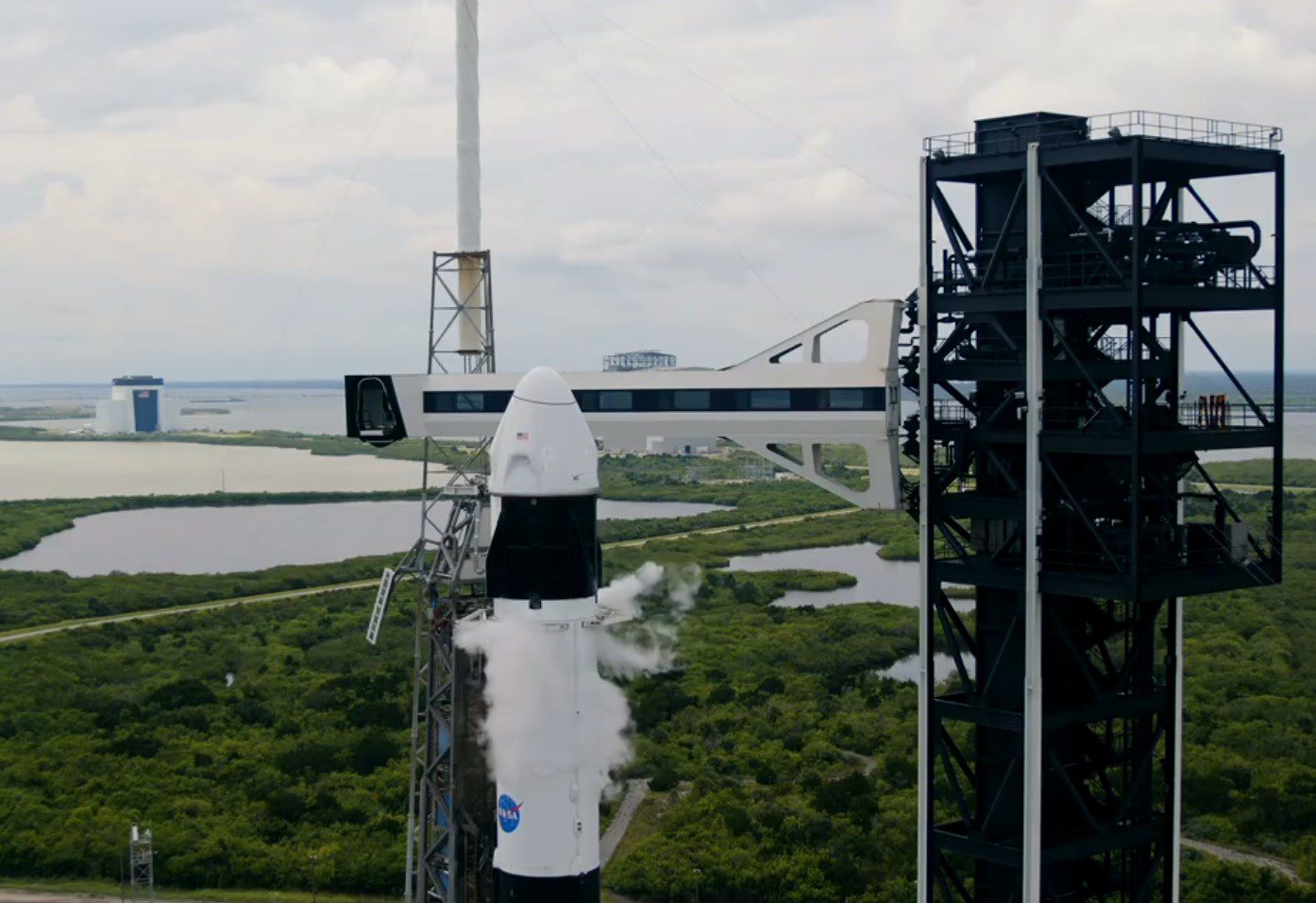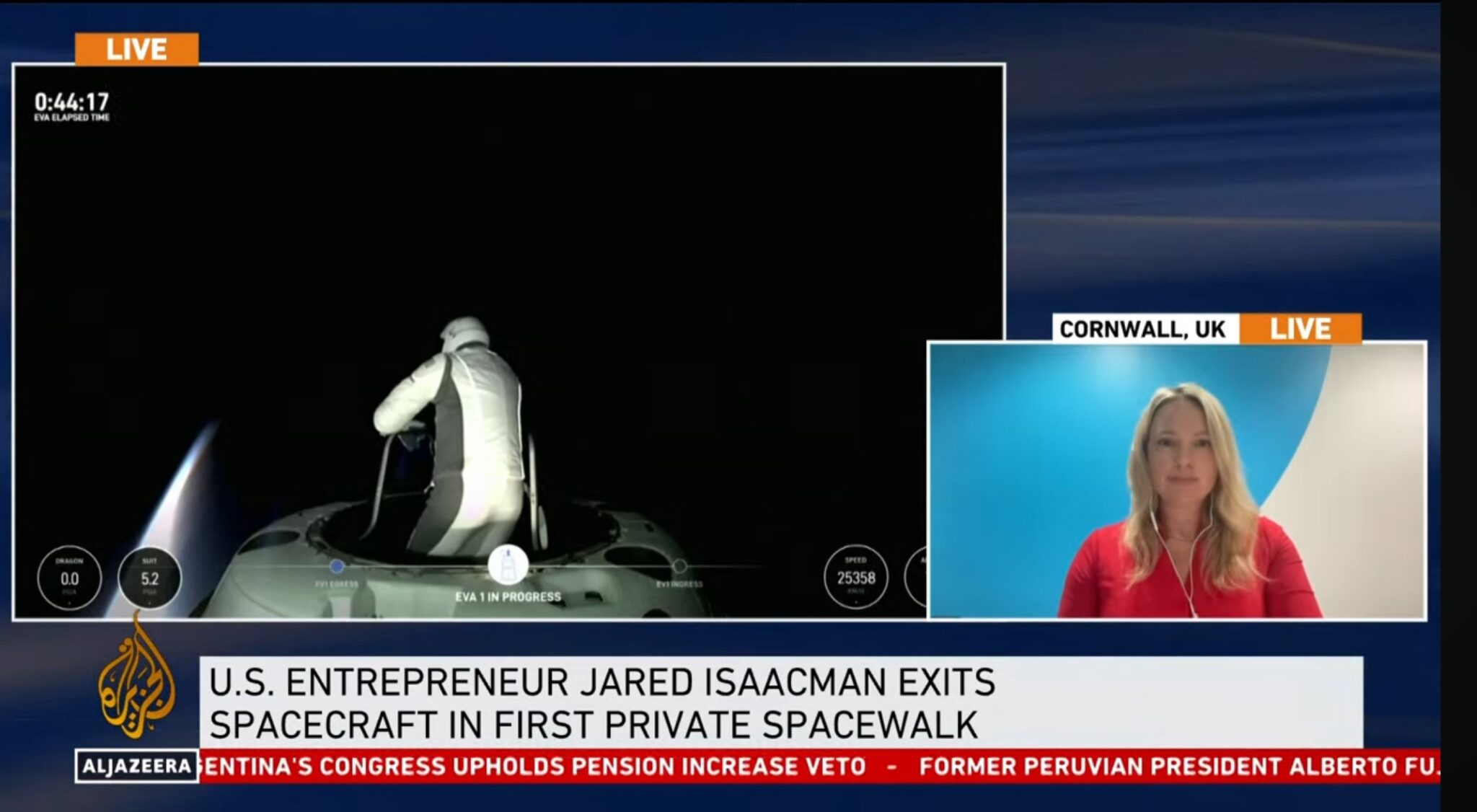Mars is now the red planet in more than one way: on 14 May, China successfully landed its Zhurong rover in a dune field in Utopia Planitia. This is significant because it marks China as the third nation to land a spacecraft on Mars, and only the second to make a success of it at the first attempt (the USSR’s Mars 3 died after a few seconds).
The 240 kg rover was transported to Mars aboard the Tianwen-1 spacecraft, which has been orbiting the planet since 10 February. It was launched on a Long March 5 (CZ-5) on 23 July 2020 from the Wenchang facility. For scholars of the Chinese language, Tianwen is variously translated as ‘heavenly questions’ or ‘questions to heaven’, while Zhurong is a ‘god of fire’ from Chinese mythology.

Artists impression of the Zhurong rover on the surface of Mars. Courtesy of Xinhua
More practically, the rover is designed to conduct an initial 90-day mission to analyse the local area and subsurface, and to take readings related to the Martian magnetic field and climate. Its six main science payloads include a laser spectroscopy instrument for the analysis of surface constituents, a magnetometer and ground-penetrating radar. It also carries both panoramic and multispectral imagers, which will produce the most immediately newsworthy data from the mission.
The landing site was chosen following detailed analysis of imagery from the Tianwen-1 orbiter with, among other things, a view to the possibility of finding water ice in the vicinity. This would be important not only for science, but also for any future human visitors. China’s next Mars mission is expected to be a sample return attempt in 2028-30.
In terms of deep space/planetary missions, this successful landing on Mars confirms China’s commitment to space exploration, following the nation’s soft landings on the lunar nearside in 2013 and farside in 2019 as well as its ground-breaking lunar sample return mission of 2020.







